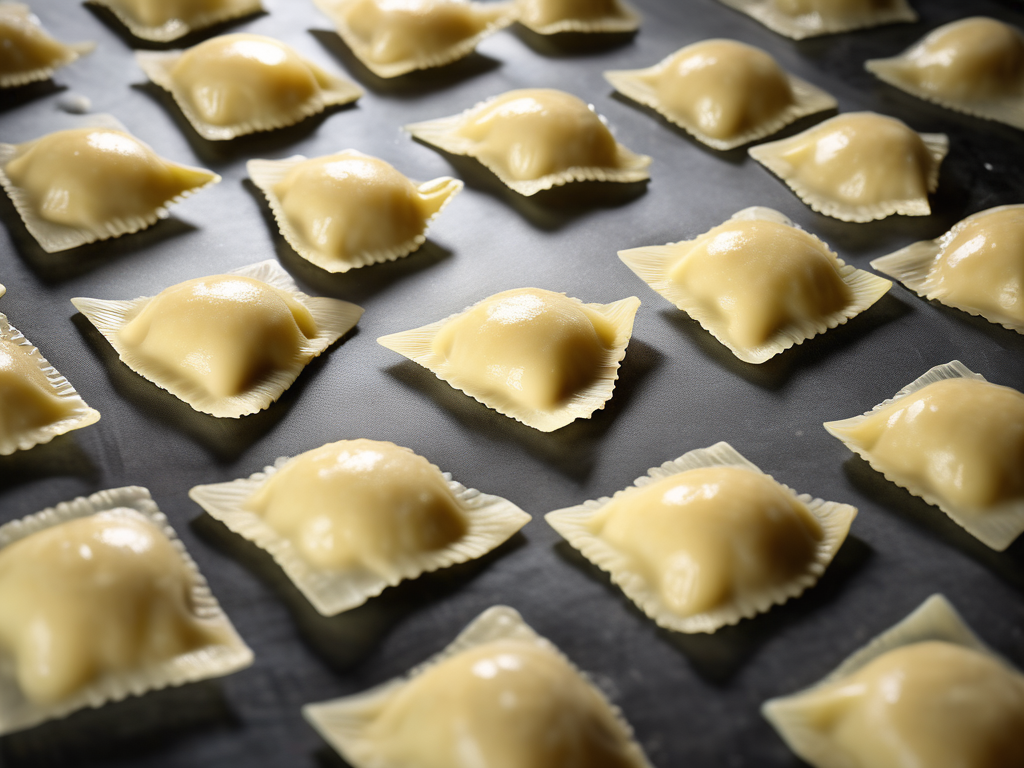
Maximizing the Shelf Life of Fresh Ravioli Opened in the Pantry
Get Your Free Food Safety Cheat Sheet
30 most common foods with instant answers. Print it and stick it on your fridge—completely free!
Maximizing the Shelf Life of Fresh Ravioli Opened in the Pantry
Fresh ravioli is a delectable pasta dish loved by many for its rich flavors and versatility. However, once opened, it's essential to store it properly to maintain its freshness and prevent spoilage. In this blog post, we'll explore effective ways to prolong the shelf life of fresh ravioli opened in the pantry. (Fresh ravioli opened)
Understanding Fresh Ravioli
Before delving into storage tips, let's understand what fresh ravioli is and how it differs from other types of pasta:
What is Fresh Ravioli?
- Fresh ravioli is a type of pasta filled with various ingredients such as cheese, meat, or vegetables.
- Unlike dried pasta, fresh ravioli contains perishable ingredients and has a shorter shelf life.
- It is typically sold refrigerated and should be consumed within a few days of purchase.
Proper Storage of Fresh Ravioli
To ensure the freshness and safety of fresh ravioli opened in the pantry, follow these storage guidelines:
1. Refrigeration
- Immediate Refrigeration: Once opened, transfer the fresh ravioli to an airtight container or resealable bag.
- Temperature: Store the ravioli in the refrigerator at temperatures below 40°F (4°C).
- Avoiding Cross-Contamination: Keep the ravioli away from raw meat, poultry, or seafood to prevent bacterial contamination.
2. Freezing
- Freezing Fresh Ravioli: If you don't plan to consume the ravioli within a few days, consider freezing it for longer storage.
- Proper Packaging: Place the ravioli in a freezer-safe container or bag, removing excess air to prevent freezer burn.
- Labeling: Clearly label the container with the date of freezing to track its freshness.
3. Pantry Storage
- Dry Storage: If you prefer storing the ravioli in the pantry, ensure it is sealed in an airtight package.
- Cool, Dark Place: Store the ravioli in a cool, dark area away from heat sources and sunlight.
- Check Expiry Date: Monitor the expiration date on the packaging and consume the ravioli before it expires.
Tips for Prolonging Fresh Ravioli's Shelf Life
Follow these practical tips to extend the shelf life of fresh ravioli opened in the pantry:
1. Proper Handling
- Clean Hands: Always wash your hands before handling fresh ravioli to prevent contamination.
- Utensils: Use clean utensils to scoop out the ravioli to avoid introducing bacteria.
2. Rotation
- First In, First Out: Practice the FIFO method when storing fresh ravioli to ensure older packages are used first.
- Check Regularly: Monitor the condition of the ravioli and discard if it shows signs of spoilage.
3. Storage Duration
- Refrigeration Time: Consume refrigerated fresh ravioli within 2-3 days for optimal freshness.
- Freezing Time: Frozen fresh ravioli can last up to 1-2 months if stored properly.
4. Reheating Safely
- Thorough Heating: When reheating fresh ravioli, ensure it reaches an internal temperature of 165°F (74°C) to kill any bacteria.
- Avoid Reheating Multiple Times: Reheat only the portion you plan to consume to prevent bacterial growth.
Conclusion
By following proper storage practices and handling guidelines, you can maximize the shelf life of fresh ravioli opened in the pantry. Remember to refrigerate or freeze the ravioli promptly, monitor its condition regularly, and reheat it safely before consumption. Enjoy your delicious fresh ravioli while ensuring safety and quality! (Fresh ravioli opened)
Related Posts
Here are some other articles you might find helpful:
Authoritative Food Safety References
These agencies and university labs inform every tip and health precaution we publish.
USDA FoodKeeper – Cold Storage Guidelines
Official refrigerator, freezer, and pantry timelines maintained by the U.S. Department of Agriculture.
Visit USDA FoodKeeperFDA Produce Safety Rule & Grower Guidance
Field-to-fridge handling practices that prevent contamination of fruits, vegetables, and leafy greens.
Visit FDA Produce SafetyCDC Foodborne Illness Prevention Hub
Surveillance-backed guidance on pathogens, symptoms, and steps to reduce foodborne illness risk.
Visit CDC Food SafetyUC Davis Postharvest Technology Center
University research detailing optimal storage atmospheres for produce after harvest.
Visit UC Davis PostharvestPenn State Extension – Home Food Preservation & Safety
Peer-reviewed extension bulletins on safe canning, chilling, and reheating practices.
Visit Penn State ExtensionGet Your Free Food Safety Cheat Sheet
30 most common foods with instant answers. Print it and stick it on your fridge—completely free! Want more? Upgrade to the complete guide with 70+ foods.
Scan your food directly and get instant safety info using our AI-powered camera feature.